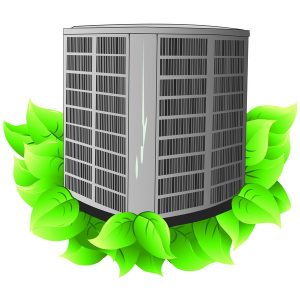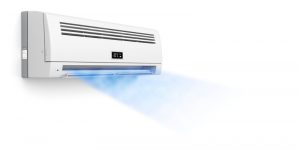An air conditioner that’s not providing enough cooling creates serious discomfort in your Birmingham, Alabama home. Don’t sweat through the summer months with insufficient cooling from an air conditioner that can’t meet your needs! In our most recent blog, Douglas Cooling & Heating explains why air conditioners may not provide enough cooling and what you can do to correct it.
Why You Have an Air Conditioner That’s Not Providing Sufficient Cooling
When a central air conditioner produces some cool air but not enough to maintain comfort, there is something up within your AC system. The issues below are commonly to blame when homeowners experience an air conditioner that’s not cooling enough and what can be done to fix them.
- Dirty air filter
- Dirty condenser coils
- Dirty condenser unit
- Low refrigerant
- Bad compressor
- Incorrect thermostat settings
- Malfunctioning thermostat
- Old HVAC system
Dirty Air Filter
When your air conditioner’s filter is filled with contaminants, the filter turns into a roadblock for air passing through the system. The dirty filter stops enough air from reaching the evaporator coil for heat removal, so your air conditioner won’t provide enough cooling because not enough air is making its way through the unit! Check your filter monthly, and change it when it becomes full to avoid this possibility.
Dirty Condenser Coils
The condenser coils in the outdoor unit can become covered in dirt and grime. This layer of yuck blocks the coil’s ability to release heat from the home’s air supply. With the heat transfer process blocked, the air conditioner won’t be able to remove as much heat from the air, and your room air will feel warmer.
You can clean the coils yourself by shutting off power to the AC unit, removing the top grille and fan, and scrubbing the coils with a mild soap. Or, call your heating, cooling or indoor air quality pro to take care of it for you.
Dirty Condenser Unit
The outdoor condenser unit can become dirty and clogged with weeds, grass clippings, mulch, leaves, and other bits that stick along its fins, as well as shrubs and nearby vegetation growing up against the unit. These debris and plants obstruct the unit so air cannot freely flow through, which is needed for the heat transfer process. Your air conditioner cannot release the heat it pulled from the indoor air, so it’ll just have to go back into your air supply.
The solution here involves cleaning the outdoor unit regularly. Pull weeds, brush off debris, prune trees and shrubs, and don’t store stuff up against the unit.
Low Refrigerant
When system refrigerant levels fall due to a refrigerant leak, the air conditioner doesn’t have enough to extract heat from indoor air or move heat between the indoor and outdoor unit. So you’ll have an AC that’s not cooling enough. This problem should be addressed by your trusted HVAC pro.
Bad Compressor
The compressor in the condenser unit makes refrigerant the right pressure for absorbing heat and transferring it. When the compressor starts to go bad, it is unable to maintain correct refrigerant pressure so the cooling system doesn’t do as good of a job. Your HVAC technician will also need to examine this component and perform the replacement if needed.
Incorrect Thermostat Settings
If you leave the system fan ON instead of setting it to AUTO, it’s going to run 24/7. In between cooling cycles, it will be pushing hot, humid air from the ducts into your living spaces – which doesn’t feel comfortable. Simply flip that switch to AUTO and you’ve solved the problem!
Malfunctioning Thermostat
Once thermostat sensors wear out, they won’t accurately read room temperatures. This could cause the thermostat to signal short cooling cycles thinking the room is properly cooled while it still feels quite warm to you. If this occurs, thermostat replacement is in the cards, so consult your HVAC technician to find a new model.
Old HVAC System
When heating and air conditioning systems are on their way out, they gradually lose their ability to keep comfort levels where they should be indoors. If you have a central air conditioning system that’s not cooling enough and it’s worsened over time, this might be your problem. Unfortunately, system replacement is the solution here.
Cooling Repairs in Birmingham, AL
If your air conditioner isn’t providing enough cooling and you can’t seem to fix it with the above tips, give Douglas Cooling & Heating a call! Our technicians will diagnose your system and perform needed repairs so you can enjoy the full effects of your air conditioner.
Continue Reading
Posted in HVAC | Comments Off on Why Is My Air Conditioner Not Cooling Enough?
 You wouldn’t want to invest in an air conditioner that uses an excessive amount of energy to do a poor job at cooling your home. This is avoidable thankfully by the fact that modern systems are made to be as energy-efficient as possible. This is shown with the rating information that is clearly visible on each model. However, if you are looking at the energy efficiency ratings of an AC but you don’t know what they mean, they won’t do you much good.
You wouldn’t want to invest in an air conditioner that uses an excessive amount of energy to do a poor job at cooling your home. This is avoidable thankfully by the fact that modern systems are made to be as energy-efficient as possible. This is shown with the rating information that is clearly visible on each model. However, if you are looking at the energy efficiency ratings of an AC but you don’t know what they mean, they won’t do you much good.

 No one ever wants their water heater to fail. However, there will come a time when every water heater reaches the end of its lifespan and needs to be replaced. The question is, has that time come for your system?
No one ever wants their water heater to fail. However, there will come a time when every water heater reaches the end of its lifespan and needs to be replaced. The question is, has that time come for your system? The summer season is in full swing and temperatures are likely to get even hotter. If you don’t already have an efficient and reliable system for
The summer season is in full swing and temperatures are likely to get even hotter. If you don’t already have an efficient and reliable system for  Discovering that your air conditioner isn’t operating properly is a pain; discovering that your AC isn’t working well during a summer that is slated to set record high temperatures is worse.
Discovering that your air conditioner isn’t operating properly is a pain; discovering that your AC isn’t working well during a summer that is slated to set record high temperatures is worse. Do you have an air conditioning system that doesn’t seem up to par anymore? Maybe it runs but it can barely emit cool air let alone keep your home cool. Summer is around the corner and things are heating up so this isn’t good news by any means.
Do you have an air conditioning system that doesn’t seem up to par anymore? Maybe it runs but it can barely emit cool air let alone keep your home cool. Summer is around the corner and things are heating up so this isn’t good news by any means.
